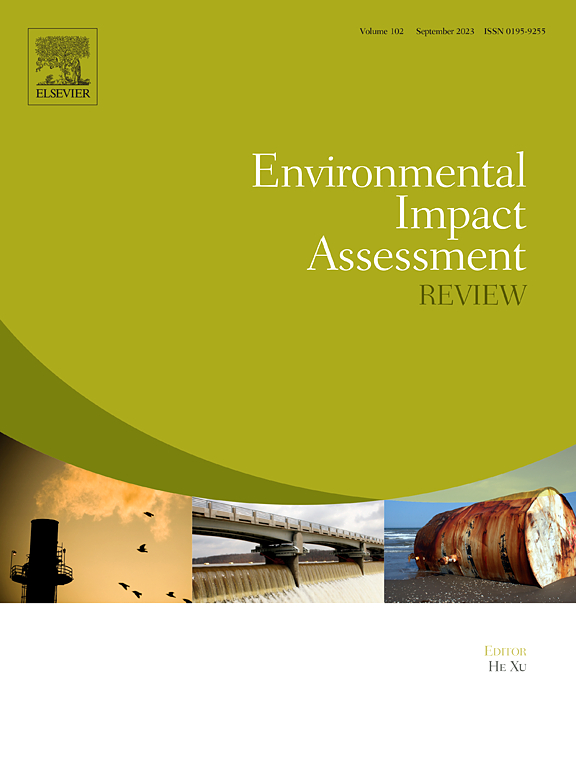通过鼓励企业节能合作减少碳排放:基于双涡旋模式的碳排放配额分配
IF 9.8
1区 社会学
Q1 ENVIRONMENTAL STUDIES
引用次数: 0
摘要
碳排放配额的分配对企业节能行为的形成起着举足轻重的作用。然而,现有的碳排放配额分配方法往往缺乏促进企业间合作的机制,也缺乏将减排与节能合作联系起来的机制。本研究提出了一种新颖的碳排放配额分配双涡旋模型,旨在促进企业间的合作,提高企业的节能绩效。双漩涡模式将具有相似特征的企业组成合作漩涡,利用经济激励措施推动集体碳减排。与传统模式不同,这种方法强调企业的合作行为,允许对节能减排工作进行动态评估。我们选择了中国广东省的纺织行业作为案例研究对象,以评估实施该模型前后碳配额的变化情况。结果表明,排放强度较低的企业获得了较高的配额分配,而排放强度较高的企业则减少了排放,从而促进了节能合作。该模型解决了两个关键的研究空白:通过合作机制优化碳配额分配,以及在碳市场中引入政府支持的经济激励机制。通过整合合作博弈理论,该模型可根据其他企业的表现调整配额,从而鼓励全市范围内持续的节能改进。研究结果有助于制定有针对性的战略来提高企业的节能水平,并为优化碳配额分配和全国碳市场的运作提供了新的见解。本文章由计算机程序翻译,如有差异,请以英文原文为准。
Reducing carbon emissions by encouraging enterprises to cooperate in energy conservation: Allocating carbon emission quotas based on the double vortex model
The allocation of carbon emission quotas plays a pivotal role in shaping the energy-saving behaviors of enterprises. However, existing methods on carbon emission quotas allocation often lack mechanisms to promote collaboration among enterprises or to link emission reductions with cooperative energy conservation efforts. This study proposed a novel double vortex model for allocating carbon emission quotas, aimed at fostering cooperation between enterprises and enhancing their energy-saving performance. The double vortex model groups enterprises with similar characteristics into collaborative vortexes, using economic incentives to drive collective carbon reduction. Unlike conventional models, this approach emphasizes cooperative corporate behavior, allowing for a dynamic evaluation of energy conservation and emission reduction efforts. The textile sector in Guangdong Province, China is selected as a case study to assess changes in carbon quotas before and after implementing the model. Results show that enterprises with lower emission intensity receive higher quota allocations, while those with higher emissions experience reductions, promoting energy-saving cooperation. This model addresses two key research gaps: optimizing carbon quota allocation through cooperative mechanisms and introducing government-backed economic incentives in carbon markets. By integrating cooperative game theory, the model adjusts quotas based on the performance of other enterprises, encouraging sustained, city-wide energy-saving improvements. The findings aid in the development of targeted strategies for improving energy conservation in enterprises and provide new insights for optimizing carbon quota allocation and the operation of national carbon markets.
求助全文
通过发布文献求助,成功后即可免费获取论文全文。
去求助
来源期刊

Environmental Impact Assessment Review
ENVIRONMENTAL STUDIES-
CiteScore
12.60
自引率
10.10%
发文量
200
审稿时长
33 days
期刊介绍:
Environmental Impact Assessment Review is an interdisciplinary journal that serves a global audience of practitioners, policymakers, and academics involved in assessing the environmental impact of policies, projects, processes, and products. The journal focuses on innovative theory and practice in environmental impact assessment (EIA). Papers are expected to present innovative ideas, be topical, and coherent. The journal emphasizes concepts, methods, techniques, approaches, and systems related to EIA theory and practice.
 求助内容:
求助内容: 应助结果提醒方式:
应助结果提醒方式:


